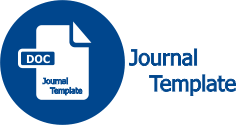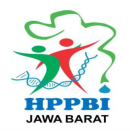Development of Based Learning Multimedia Flipbook on the Subject of Life Organization at SMPIT Al Multazam Kuningan
DOI:
https://doi.org/10.25134/quagga.v15i2.2Keywords:
Media development, Multimedia learning, flipbookAbstract
Learning patterns that only use blackboards, books, worksheets, and PowerPoint slides generally only focus on the teacher while students listen, take notes, and memorize more. This learning pattern can cause boredom and monotonous learning so students are not interested in the learning process. One effort to overcome this problem is to develop appropriate learning media such as flipbook-based learning multimedia. This research was conducted in class VII SMPIT Al Multazam Kuningan to develop flipbook-based learning multimedia. This research was conducted using the R&D (Research and Development) method which refers to the ADDIE model. The percentage of media validation scores by experts is 87% from linguists, 90% from content/material experts, and 89% from media experts. Furthermore, at the trial stage, flipbook-based learning multimedia received an assessment percentage of 89.8% for the material aspect, 87.55% for the language aspect, 88.9% for the media aspect, and 88.75% for the average percentage. These results indicate that flipbook-based learning multimedia is very feasible to be applied in the learning process.
References
Amanullah, M. A. (2020). Pengembangan Media Pembelajaran Flipbook Digital Guna Menunjang Proses Pembelajaran Di Era Revolusi Industri 4.0. Jurnal Dimensi Pendidikan Dan Pembelajaran, 8(1), 37-44.
Arsyad, Azhar. 2014. Media Pembelajaran. Jakarta: Grafindo.
Cheng, Y.-H & Cheng, J.-T & Chen, D.-J. (2012). The Effect of Multimedia Computer Assisted Instruction and Learning Style on Learning Achievement. WSEAS Transactions on Information Science and Applications. 9. 24-35.
Diani, R., & Hartati, N. S. (2018). Flipbook berbasis literasi Islam: Pengembangan media pembelajaran fisika dengan 3D pageflip professional. Jurnal Inovasi Pendidikan IPA, 4(2), 234-244.
Eka P.A, Refirman Dj. (2013). “Efektifitas Penerapan e- book sebagai Sumber Belajar Mandiri dalam Pembelajaran Biologi”. Prosiding Semirata FMIPA Universitas Lampung hal 243-250.
Fahyuni, E.F. 2017. Teknologi Informasi dan Komunikasi (Prinsip dan Aplikasi dalam Studi Pemikiran Islam). Sidoarjo: UMSIDA Press.
Faturrohman, Pupuh & Sobry Sutikno. 2011. Strategi Belajar Mengajar Melalui Penanaman Konsep Umum dan Konsep Islami. Bandung: Refika Aditama
Fransiska Astri Kusumastuti. (2020). Pengaruh Integrasi E-Book Interaktif Pada Kegiatan Belajar Mengajar Sains. Jurnal Becoss (Business Economic, Communication, and Social Sciences), Vol.2 No.1 January 2020: 83-88.
Mulyadi, D. U., & Wahyuni, S. (2016). Pengembangan media flash flipbook untuk meningkatkan keterampilan berfikir kreatif siswa dalam pembelajaran IPA di SMP. Jurnal pembelajaran fisika, 4(4), 296-301.
R Adawiyah, A Harjono, G Gunawan dan H Hermansyah. (2019). Interactive e-book of physics to increase students creative thinking skills on rotational dynamics concept. Journal of Physics: Conf. Series 1153 (2019) 012117 hal 1-6.
Ramdania DR, Sutarno H & Waslaluddin. 2017. Penggunaan media flash flipbook dalam pembelajaran teknologi informasi dan komunikasi untuk meningkatkan hasil belajar siswa. Jurnal Pendidikan 1(1):1-6.
Roemintoyo, R., & Budiarto, M. K. (2021). Flipbook as Innovation of Digital Learning Media: Preparing Education for Facing and Facilitating 21st Century Learning. Journal of Education Technology, 5(1), 8-13.
Sabri, A. (2020). Pendidikan Islam Menyongsong Era Industri 4.0. Sleman: Deepublish.
Safitri, S. N., Churiyah, M., Arief, M., & Zen, F. (2021). Pengembangan E-modul berdasarkan aplikasi Pdf Flipbook untuk meningkatkan kemampuan menulis dan kemampuan belajar mandiri peserta didik (E-module based on the corporate Pdf Flipbook application which is useful in the Covid-19 era). Jurnal Ekonomi, Bisnis dan Pendidikan, 1(6), 589-599.
Santoso, T.N.B., Siswandari, dan Hery Sawiji (2018). The Effectiveness of eBook versus Printed Books in the Rural Schools in Indonesia at the Modern Learning Era. International Journal of Educational Research Review, 3(4),77-84.
Saraswati, S., & Linda, R. (2019). Development of Interactive E-Module Chemistry Magazine Based on Kvisoft Flipbook Maker for Thermochemistry Materials at Second Grade Senior High School. Journal of Science Learning, 3(1), 1-6.
Sriyanti, I., Almafie, M. R., Marlina, L., & Jauhari, J. (2020). The effect of using flipbook-based e-modules on student learning outcomes. Kasuari: Physics Education Journal (KPEJ), 3(2), 69-75.
Sugianto, D., Abdullah, A. G., Elvyanti, S., & Muladi, Y. (2013). Modul virtual: Multimedia flipbook dasar teknik digital. Invotec, 9(2).
Sukmadinata, S. N. 2012. Metode Penelitian Pendidikan. Bandung: Rosdakarya.
Surjono, Herman. 2017. Multimedia pembelajaran interaktif konsep dan pengembangan. Yogyakarta: UNY Press.
Susanto, R., & Lestari, E. S. (2020). The Effect Of Flipbook-Based Field Teaching Materials With Anchored Instruction Model To Improve Students'critical Thinking Skills. European Journal of Education Studies, 7(12).
Sutopo, H. A. 2012. Teknologi Informasi dan Komunikasi dalam Pendidikan. Yogyakarta: Graha Ilmu.
Warsita, B. 2008. Teknologi Pembelajaran Landasan & Aplikasinya. Jakarta: Rineka Cipta.
Wijaya, E. Y., Sudjimat, D. A., Nyoto, A., & Malang, U. N. (2016). Transformasi pendidikan abad 21 sebagai tuntutan pengembangan sumber daya manusia di era global. In Prosiding Seminar Nasional Pendidikan Matematika (Vol. 1, No. 26, pp. 263-278)

















